The Prohibition Act of 1920 in America An attempt to ban booze in America, called Prohibition, was by most accounts, a failure. The 18th Amendment to the Constitution was eventually repealed in 1933 When the Doughboys came back from World War I, they found many changes, not the least of which was an absence of alcoholic beverages. The nation, much of which was dry already, had decided to eliminate the saloon, once and for all. As early as 1916, a total of 23 out of 48 states had already passed antisaloon laws. The movement was undertaken to reduce crime and corruption, improve health, solve social problems and reduce the tax burden created by prisons and poorhouses. Prohibition, called "the noble experiment" by Herbert Hoover, had come at last. The 18th Amendment to the Constitution prohibited the manufacture, sale or transportation of intoxicating liquors. When the amendment came before the Senate in 1917, it was passed by a one-sided vote after only 13 hours of debate. When the House of Representatives accepted it a few months later, the debate upon the amendment as a whole, occupied only a single day. Hard to imagine in the politics of this decade. The state legislatures ratified it in short order and by January of 1919, some two months after the armistice, the necessary three-quarters of the states had fallen into line and the amendment was part of the Constitution. Initially, a number of Americans probably endorsed prohibition but the public rapidly grew disenchanted with it. The hip flask, filled with "bootleg" whiskey and displayed openly, soon became a familiar symbol of the era. Every community of any size had their "speakeasies," where both imported and homemade alcohol could be purchased. Prohibition jump-started the Jazz Age. As songwriter Hoagy Carmichael put it, the 1920s came in "with a bang of bad booze, flappers with bare legs, jangled morals and wild weekends." According to novelist F. Scott Fitzgerald, during Prohibition, "The parties were bigger…the pace was faster…and the morals were looser." These underground saloons did a booming business. Keeping them supplied was the occupation for many thousands of rumrunners, bootleggers, and beer barons, who were forced to work beyond the law. All too often, rivalries and differences of opinion resulted in open warfare and gangland murders. Thanks to wartime technology, they had new and deadly weapons at their disposal, such as hand grenades, handy for blowing up the competition, not-to-mention machine guns and faster getaway cars. Inevitably most of the liquor traffic fell into the hands of gangsters, whose names we still know today. Alphonse "Scarface Al" Capone of Chicago was only the most notorious. Gangsters invested their profits in countless other businesses, both legitimate and illegitimate. Their widespread influence pervaded law enforcement agencies and other organs of government. Americans had never been a particularly law-abiding people, but in the twenties statistics on crime soared. The Eighteen Amendment had a host of both defenders and detractors. The defenders insisted it was a success, sharply reducing deaths, divorces, accidents and poverty. But the other side held it was a senseless attempt the enforce the impossible. One gentleman of the era quipped, "they might as well have been trying to dry up the Atlantic with a post-office blotter." Basically, those who wanted prohibition could say they had it, those to wanted to drink, could and often did. Thus as a social experiment, prohibition was considered a dismal failure. Not only was it impossible to enforce, it provided the underworld thugs with their primary source of revenue, thus creating another set of problems entirely. The American public, which had once willingly or at least resignedly accepted the law, gradually came to look upon it as the ill-advised measure it was. Yet, because the issue was political dynamite, the movement to abolish prohibition made little headway during the 1920s. Not until 1933, the first year of Franklin D. Roosevelt's administration was it repealed. Following repeal, liquor control again became a state, rather than federal problem. Today's historians argue the evidence from the "noble experiment" affirms sound economic theory, which predicts prohibition of any mutually beneficial exchange is doomed to fail.. | 
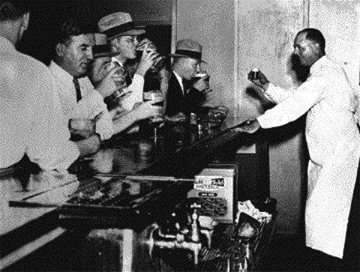
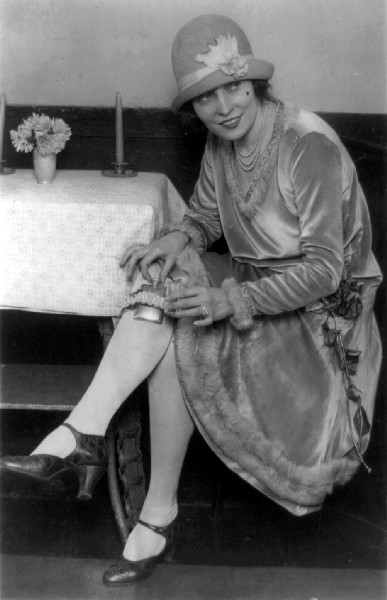

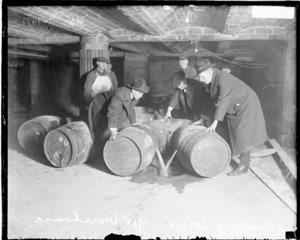
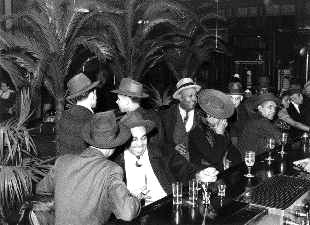
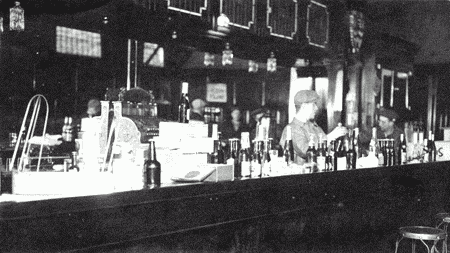








No comments:
Post a Comment